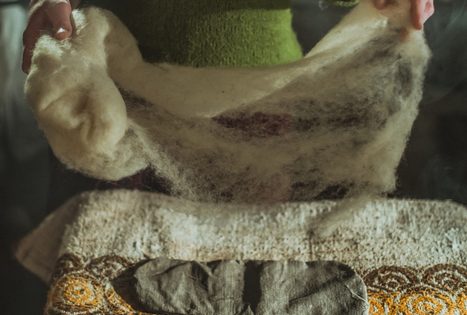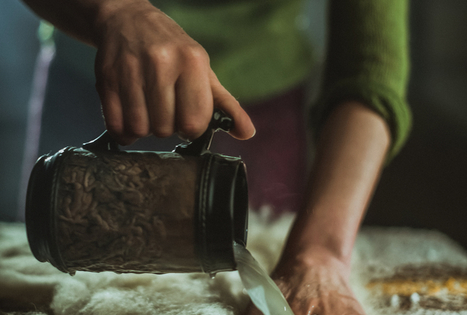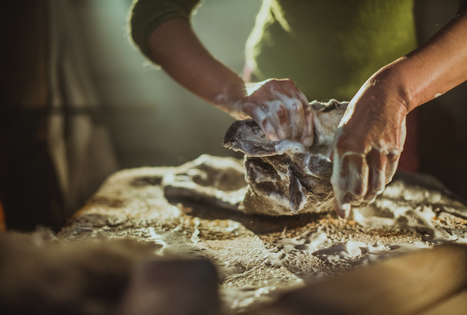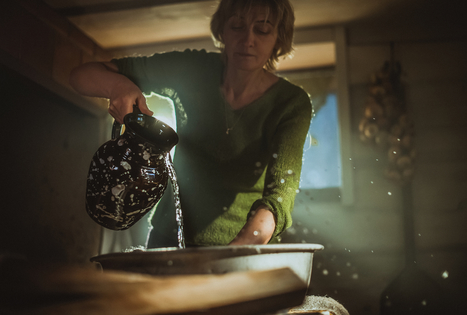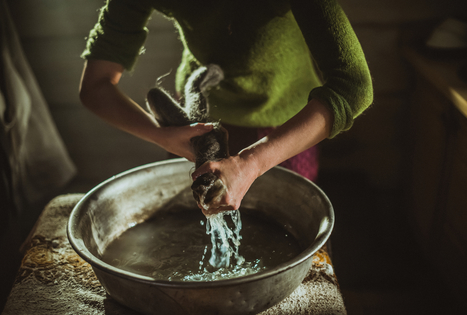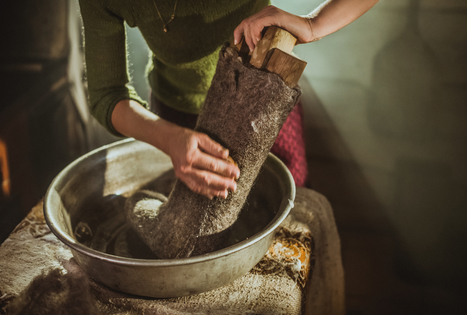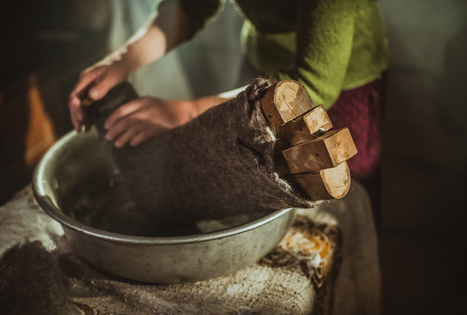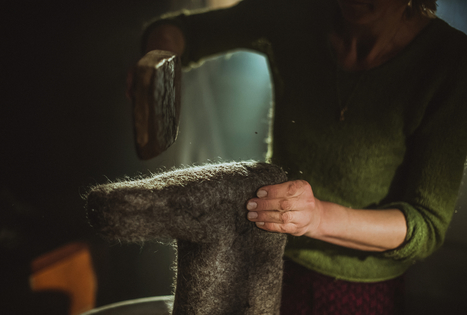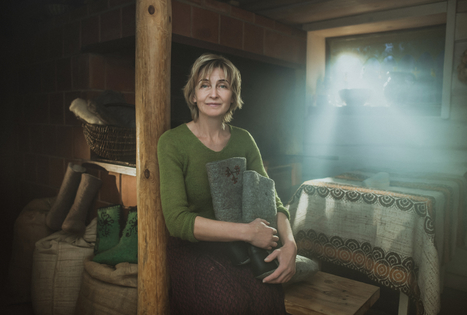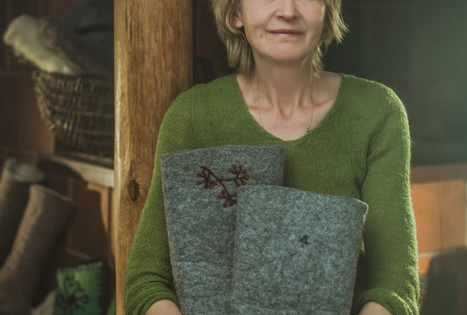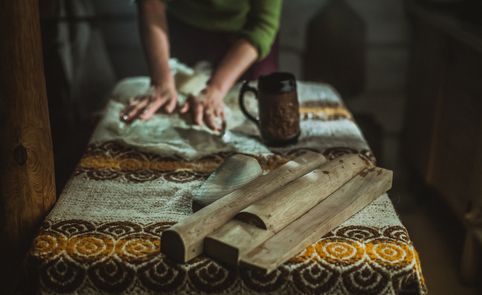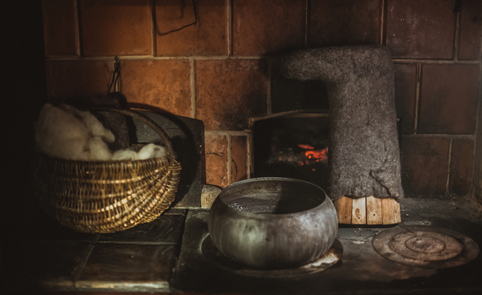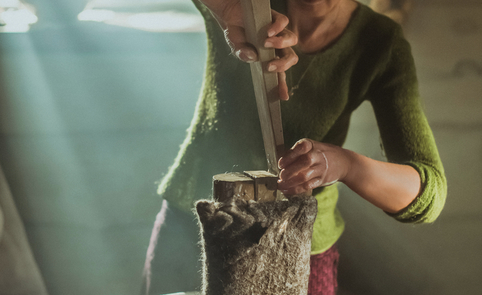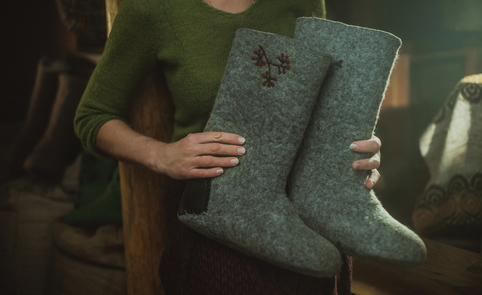Legend has it that the first carpet was made on Noah’s ship, when the wool of the sheep that were on the ship fell on the floor, got wet, and was stamped by hooves. And when the sheep left the ship, a warm woollen carpet was left on the floor. Felting is one of the oldest techniques for making woollen fabrics, and has not been forgotten to this day.
The first felt products
Archaeologists date the emergence of the first felt products to the 6th–5th century BC. When wild animals began to shed, the ancient people would gather their wool to produce the first primitive garments. People came to realise that dressed in sheepskin, they could endure even the coldest winters and the hottest summer temperatures. After all, wool is a natural non-woven fibre that provides outstanding protection against moisture and cold. Wool is excellent for regulating body temperature, so people’s feet didn’t freeze or sweat when wearing felted wool boots.
Only natural wool has the properties suitable for felting
Only natural wool has the properties suitable for felting and creating a felted product. Wool felting does not require spinning wheels or looms. It is the very simplest mechanical process by which natural animal fibre, under the influence of moisture, heat, rubbing and pressing, becomes a single piece of felt.
Felt is usually made of raw wool, carded wool or wool tops. Felting can be done by the wet method, with hot water and soap, or the dry method, using special needles. During this process, the wool fibres tear and hook together to form a single piece of dense wool fabric. Dry wool felting is used for making toys, jewellery, figurines and dolls. Meanwhile, wet felting is better suited for making flat items such as wraps, scarves, clothes and wall art.
Wool has excellent healing characteristic. For example, wearing felt boots improves blood circulation, suppresses inflammation and strengthens the body. Interestingly, Peter the Great liked to walk around with felt boots, which he wore over bare feet. The Russian tsar used to say that with them, his feet could breathe and his health improved.
Where did the Lithuanian word for “greatcoat” come from?
Another popular wool product is melton. This is a thick woollen fabric that is woven with a loom and then fulled. It is left with the natural colour of the fibre or dyed, and was fulled at home or at fulling mills. Up until the mid-20th century, melton was woven in Lithuania by rural women, and peasants used it to make warm outerwear (greatcoats, men’s suits, coats, jackets). Archaeologists have discovered fragments of thick melton woven in the 9th–12th centuries. From the late 19th century to the early 20th century, workers in cities also wore melton clothing. Up until the 19th century, the melton in Lithuania was monochrome – mostly grey, black or brown – with patterned versions appearing later with different colours of yarn, and different combinations of warp and weft. In Lithuanian, melton is called milas, and that is where the word milinė – “greatcoat” – comes from.
A craft not forgotten to this day
There are currently a multitude of materials that can save you from the cold, but people have not forgotten felted wool to this day. One of the oldest types of textiles has now become relevant and fashionable once again. The half-forgotten craft was restored to life in the modern fashion industry, and felt made the old-fashioned way has taken on many new colours.
Nevertheless, felting is a difficult job that requires a lot of physical strength. Long and intensive felting takes a toll on your arms and back. Many artisans engaged in this craft say that the work requires patience. However, when felting is done for your own pleasure, the work turns into a form of relaxation. There are currently 31 certified artisans in Lithuania.


